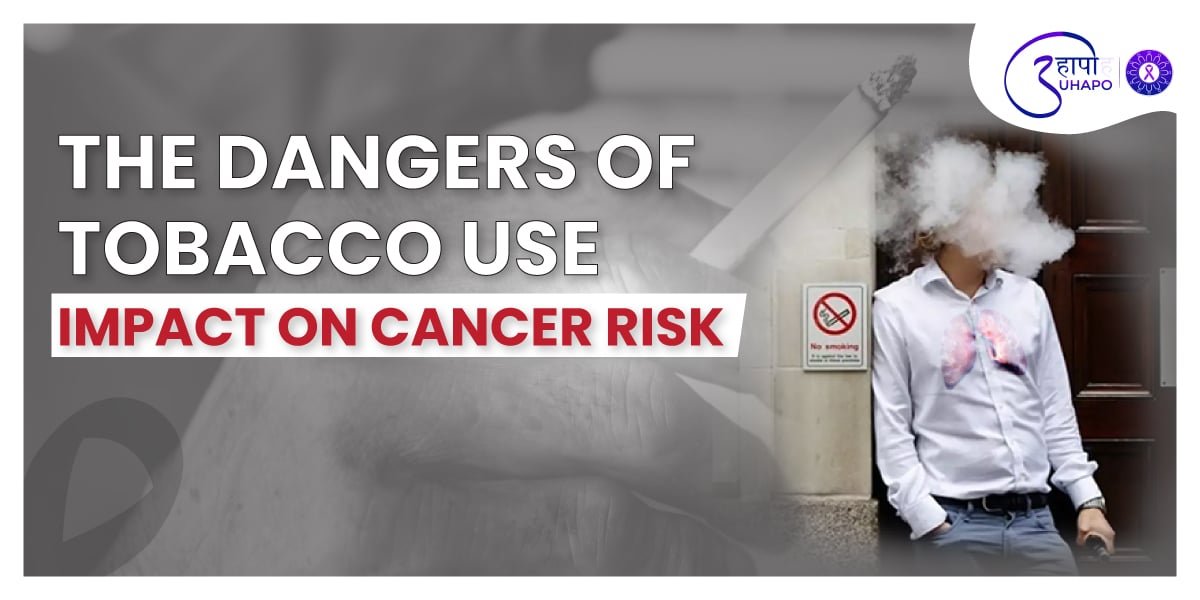The Dangers of Tobacco Use: Impact on Cancer Risk
Tobacco use remains a leading cause of preventable disease and death worldwide. Despite extensive research and public health campaigns highlighting its risks, millions continue to use tobacco products, primarily cigarettes. The correlation between tobacco use and various types of cancer is well-documented and alarming.
This blog explores the profound impact of tobacco on cancer risk, detailing the biological mechanisms, types of cancers associated with tobacco, and the broader implications for public health.
Understanding the Link Between Tobacco and Cancer
Tobacco contains a toxic mix of over 7,000 chemicals, including at least 70 known carcinogens. These carcinogens, such as nicotine, tar, formaldehyde, and benzene, play a significant role in initiating and promoting the growth of cancerous cells. When tobacco smoke is inhaled, these substances enter the lungs, from where they spread to other parts of the body through the bloodstream, increasing the risk of cancer in multiple organs.
One of the primary mechanisms through which tobacco causes cancer is by damaging the DNA within cells. Carcinogens in tobacco smoke can induce mutations in key genes that regulate cell growth and repair, such as the tumor suppressor gene p53. These mutations can lead to uncontrolled cell division, ultimately forming tumors. Additionally, tobacco smoke causes chronic inflammation, which creates an environment conducive to cancer development.
Types of Cancers Associated with Tobacco Use
The most well-known cancer linked to tobacco use is lung cancer. In fact, about 85% of lung cancer cases are attributed to smoking. Smokers are 15 to 30 times more likely to develop lung cancer compared to non-smokers. The risk increases with the number of cigarettes smoked and the duration of smoking. Even exposure to secondhand smoke significantly elevates the risk of lung cancer among non-smokers.
However, lung cancer is not the only type of cancer caused by tobacco use. Smoking is a major risk factor for cancers of the mouth, throat (pharynx and larynx), esophagus, pancreas, bladder, kidney, liver, stomach, cervix, colon, and rectum. It also contributes to acute myeloid leukemia. Chewing tobacco, which is often perceived as a safer alternative to smoking, is strongly linked to cancers of the oral cavity, including the lips, tongue, and floor of the mouth.
The Global Burden of Tobacco-Related Cancers
Tobacco use is responsible for approximately 22% of cancer deaths globally. In the United States alone, smoking causes more than 480,000 deaths annually, with about 160,000 of these attributed to cancer. The economic burden is equally staggering, with smoking-related illnesses costing the U.S. over $300 billion each year in direct medical care and lost productivity.
Efforts to reduce tobacco use have shown some success. Public health initiatives, such as smoking bans in public places, increased taxes on tobacco products, graphic warning labels, and anti-smoking campaigns, have contributed to a decline in smoking rates in many countries. However, the fight is far from over. The tobacco industry continues to aggressively market its products, particularly in low- and middle-income countries where regulatory measures may be weaker.
The Role of Prevention and Cessation
Preventing tobacco use, especially among young people, is critical to reducing the incidence of tobacco-related cancers. Education and awareness programs targeting adolescents can help prevent them from starting to smoke. Studies show that individuals who do not begin smoking by age 26 are unlikely to ever start.
For current smokers, quitting tobacco is the most effective way to reduce cancer risk. The benefits of quitting smoking are substantial and start almost immediately. Within weeks of quitting, lung function improves, and the risk of developing cancer begins to decline. After 10 to 15 years of abstinence, the risk of lung cancer drops by as much as 50% compared to continuing smokers. Various cessation aids, including nicotine replacement therapy, prescription medications, and counseling, can significantly increase the chances of successfully quitting.
The Importance of Support and Resources
Quitting smoking is a challenging process, often requiring multiple attempts. Support from healthcare providers, family, and friends can make a crucial difference. Programs such as the American Cancer Society’s Quit For Life® and resources like Smokefree.gov offer valuable tools and support for those trying to quit.
Moreover, legislative measures play a pivotal role in tobacco control. Enforcing strict regulations on tobacco advertising, ensuring smoke-free environments, and providing resources for cessation programs are essential components of a comprehensive strategy to reduce tobacco use and its associated cancer risks.
Conclusion
The dangers of tobacco use and its impact on cancer risk are unequivocal. Despite the known hazards, tobacco remains a pervasive threat to global health. Understanding the mechanisms through which tobacco causes cancer and recognizing the broad spectrum of cancers linked to its use can reinforce the urgency of prevention and cessation efforts.
The fight against tobacco-related cancers requires a multifaceted approach, encompassing education, policy, and support for cessation. By continuing to invest in these areas, we can make significant strides in reducing the burden of cancer and improving public health outcomes worldwide. The message is clear – Quitting tobacco is not just a personal health decision, but a crucial step towards a healthier society.


One Reply to “The Dangers of Tobacco Use: Impact on Cancer Risk”
July 23, 2025